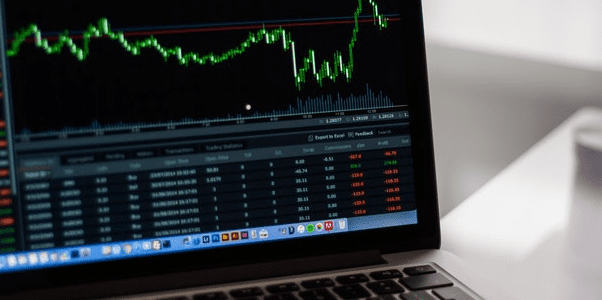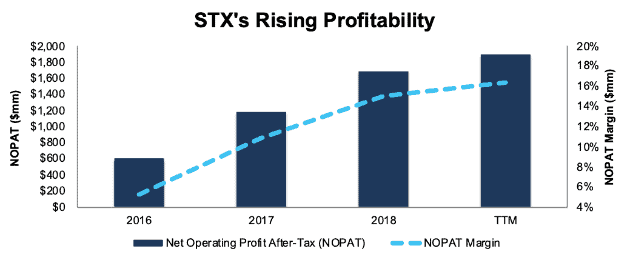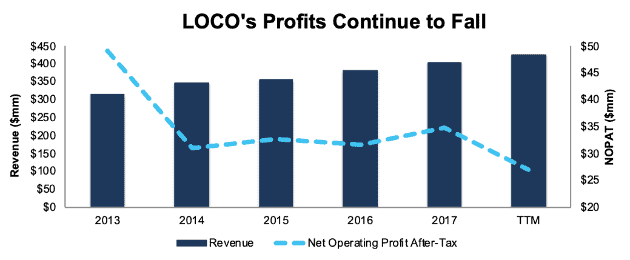Recap from December Picks
Our Most Attractive Stocks (-6.5%) outperformed the S&P 500 (-7.0%) last month. The best performing large cap stock fell 1% and the best performing small cap stock was up 9%. Overall, 24 out of the 40 Most Attractive stocks outperformed the S&P 500 in December.
Our Most Dangerous Stocks (-8.0%) outperformed the S&P 500 (-7.0%) as a short portfolio last month. The best performing large cap stock fell by 19% and the best performing small cap stock fell by 18%. Overall, 23 out of the 40 Most Dangerous stocks outperformed the S&P 500 as shorts in December.
The successes of these model portfolios highlight the value of our machine learning and AI Robo-Analyst technology[1], which helps clients fulfill the fiduciary duty of care and make smarter investments[2].
15 new stocks make our Most Attractive list this month, and 11 new stocks fall onto the Most Dangerous list this month. January’s Most Attractive and Most Dangerous stocks were made available to members on January 4, 2019.
Our Most Attractive stocks have high and rising returns on invested capital (ROIC) and low price to economic book value ratios. Most Dangerous stocks have misleading earnings and long growth appreciation periods implied by their market valuations.
Most Attractive Stocks Feature for January: Seagate Technology (STX: $39/share)
Seagate Technology (STX) is the featured stock from January’s Most Attractive Stocks Model Portfolio. Seagate has been a favorite stock for quite some time and remains undervalued.
Since 2016, STX has grown after-tax operating profit (NOPAT) by an astounding 68% compounded annually. Over the trailing twelve months, NOPAT has grown 53%. Over the past 15 years, STX has grown NOPAT by 7% compounded annually. NOPAT margin has increased from 5% in 2016 to 16% TTM while return on invested capital (ROIC) has improved from 8% to a top-quintile 26% over the same time.
Figure 1: STX Revenue & NOPAT Since 2016
Sources: New Constructs, LLC and company filings
STX Valuation Still Provides Significant Upside
Even after outperforming the market since we originally featured the stock in 2010, STX remains very cheap. At its current price of $39/share, STX has a price-to-economic book value (PEBV) ratio of 0.6. This ratio means the market expects STX’s NOPAT to permanently decline by 40%. This expectation seems pessimistic given that STX has grown NOPAT by 7% compounded annually since 2003 and much faster in recent years.
If STX can maintain TTM NOPAT margins (16%) and grow NOPAT by just 5% compounded annually for the next five years, the stock is worth $74/share today – a 90% upside. See the math behind this dynamic DCF scenario.
Critical Details Found in Financial Filings by Our Robo-Analyst Technology
As investors focus more on fundamental research, research automation technology is needed to analyze all the critical financial details in financial filings. Below are specifics on the adjustments we make based on Robo-Analyst findings in Seagate Technology’s 2018 10-K:
Income Statement: we made $570 million of adjustments with a net effect of removing $494 million in non-operating expense (4% of revenue). See all adjustments made to STX’s income statement here.
Balance Sheet: we made $5.5 billion of adjustments to calculate invested capital with a net increase of $846 million. The most notable adjustment was $2.6 billion (41% of reported net assets) related to asset write-downs. See all adjustments to STX’s balance sheet here.
Valuation: we made $6.3 billion of adjustments with a net effect of decreasing shareholder value by $3.6 billion. The largest adjustment to shareholder value was $4.9 billion in total debt, which includes $73 million in off-balance sheet operating leases. This lease adjustment represents 1% of STX’s market value.
Most Dangerous Stocks Feature: El Pollo Loco (LOCO: $16/share)
El Pollo Loco (LOCO) is the featured stock from January’s Most Dangerous Stocks Model Portfolio. Since we placed it in the Danger Zone in March 2015, LOCO is down 41% while the S&P is up 21%, yet shares remain overvalued.
Despite consistent revenue growth (6% compounded annually since 2013), LOCO’s NOPAT has fallen by 8% compounded annually since 2013. TTM NOPAT is down 28%. LOCO’s falling profits have been driven by margins declining from 16% in 2013 to just 6% TTM. The company’s ROIC has also fallen from 10% in 2013 to a bottom-quintile 4% TTM.
Figure 2: LOCO Revenue & NOPAT Since 2013
Sources: New Constructs, LLC and company filings
LOCO Provides Poor Risk/Reward
Despite the deterioration in fundamentals, LOCO is up 45% over the past year, which has left shares significantly overvalued.
To justify its current price of $16/share, LOCO must maintain TTM NOPAT margins (6%) and grow NOPAT by 9% compounded annually for the next 11 years. See the math behind this dynamic DCF scenario. This expectation seems lofty given LOCO’s declining margins and inability to grow NOPAT in recent years.
Even if the company can maintain current margins and grow NOPAT by a more reasonable 4% compounded annually for the next decade, the stock is worth just $8/share today – a 50% downside. See the math behind this dynamic DCF scenario.
Critical Details Found in Financial Filings by Our Robo-Analyst Technology
As investors focus more on fundamental research, research automation technology is needed to analyze all the critical financial details in financial filings. Below are specifics on the adjustments we make based on Robo-Analyst findings in El Pollo Loco’s 2017 10-K:
Income Statement: we made $72 million of adjustments, with a net effect of removing $26 million in non-operating expense (6% of revenue). You can see all the adjustments made to LOCO’s income statement here.
Balance Sheet: we made $274 million of adjustments to calculate invested capital with a net increase of $238 million. One of the largest adjustments was $213 million due to operating leases. This adjustment represented 54% of reported net assets. You can see all the adjustments made to LOCO’s balance sheet here.
Valuation: we made $299 million of adjustments with a net effect of decreasing shareholder value by $299 million. There were no adjustments that increased shareholder value. Apart from total debt, which includes the operating leases noted above, the largest adjustment to shareholder value was $15 million in outstanding employee stock options. This stock adjustment represents 2% of LOCO’s market cap.
This article originally published on January 10, 2019.
Disclosure: David Trainer, Kyle Guske II, and Sam McBride receive no compensation to write about any specific stock, style, or theme.
Follow us on Twitter, Facebook, LinkedIn, and StockTwits for real-time alerts on all our research.
[1] Harvard Business School features the powerful impact of our research automation technology in the case New Constructs: Disrupting Fundamental Analysis with Robo-Analysts.
[2] Ernst & Young’s recent white paper “Getting ROIC Right” demonstrates the superiority of our stock research and analytics.


